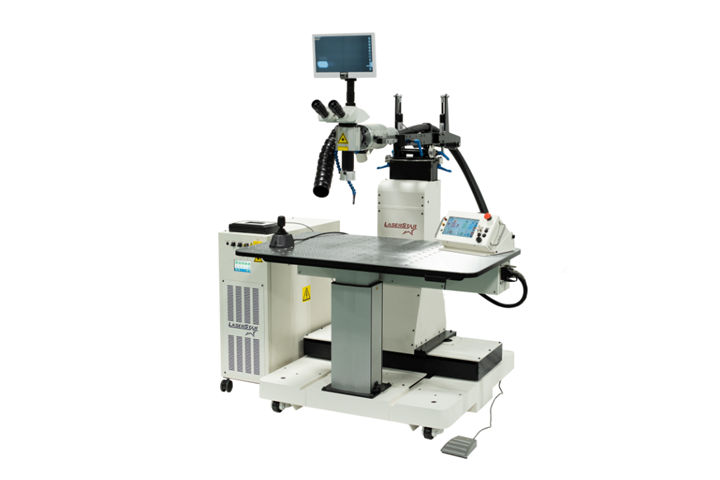On-Site Mold Repair Flexibility Enhanced With Fiber Laser Welding
The LaserStar FiberStar 8900 is a series of CNC welding workstations providing high peak power, optimal performance and platform flexibility for a range of alloys and applications.
Today’s mold repair micro-welding laser industry is characterized by rapidly changing, ever-evolving customer demands and intense competition. With its fundamentals in innovative ideas, successful designs and a commitment to quality and performance, LaserStar Technologies Corp. calls attention to the FiberStar 8900 Series CNC welding workstations.
The state-of-the-art laser resonator technology provides high peak power, optimal performance and throughput, higher uptime, enhanced electrical efficiency and a space-saving air-cooled design. Solid-state diodes are reported to provide instantaneous power with no “warm-up time” required.
According to the company the laser source is a permanently sealed design that protects against dust and dirt, does not require adjustment, has no consumable parts and requires no maintenance. These features help to ensure the FiberStar system’s performance resulting in stable, consistent material processing for years of operation.
Fiber laser welding technology produces a sharp, focused light beam that consistently melts a small area of metal. The benefit of the technology is that very little heat is generated at the weld point, enabling users to easily laser weld >0.025 mm from complex, heat-sensitive, intricate parts while providing a pulse stability of /-1%.
Operators position or fixture the parts on the worktable while viewing the application through a stereo-microscope in the welding zone. An internal cross-hair allows the operator to easily align and weld the parts at the correct location. Optimal platform flexibility is ensured for the widest range of on-site mold repair welding applications.
FiberStar fiber laser welding systems are ideal for a wide range of complex alloys and applications including medical device components; spot welding; seam welding; mold repair welding; micro welding; battery welding; computer components; aerospace and electronics; and automotive and micro components.
Related Content
-
What You Should Know About Injection Mold Safety Straps
Every mold should have one in order to be safe and OSHA compliant.
-
What Is Scientific Maintenance? Part 1
Part one of this three-part series explains how to create a scientific maintenance plan based on a toolroom’s current data collection and usage.
-
5 Hot Runner Tips for Moldmakers and Molders
Best practices for initial hot runner tryouts and effective preventive maintenance.
.jpg;maxWidth=970;quality=90)









.jpg;maxWidth=300;quality=90)





